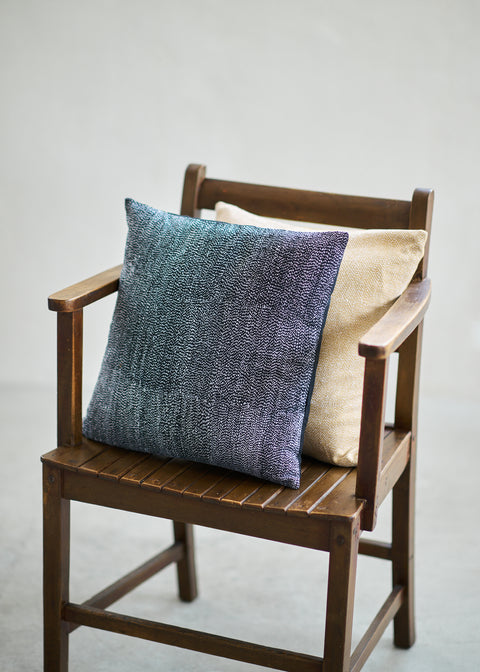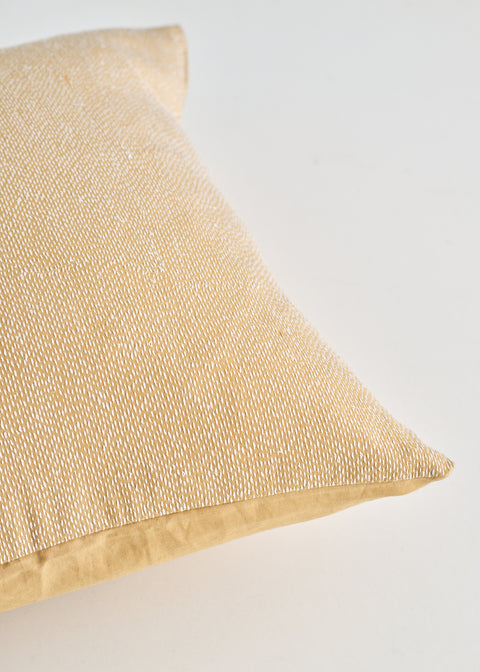


Archana Kumari Sujuni Cushion Cover
Product Description
A series of cushion covers designed by Archana Kumari.
First, we would like to introduce “Plains.”
If you look closely, you will see stitching that resembles ridges between the plains on the surface of the stitching.
This piece deliberately does not feature any artwork, but it can be used in combination with other cushion covers that do feature artwork to create a good balance.
Archana Kumari is an artist from a village in Bihar. At the age of 14, she was taken to New York by an American NGO representative, despite having never even seen New Delhi before. The experience of showcasing her embroidery in New York became a major turning point in her life. After graduating from a fashion college in Delhi, she continues to work with women in her village to preserve and promote Bihar's Sujani embroidery.
*Please note that there may be individual differences in the finish of embroidery and other details. This is a characteristic of hand embroidery.
Size
Approximately 40cm × 40cm
* The size and color may differ from the actual product.
Materials
Cotton
Region of production
Bihar
System of design
By craftpersons
Archana Kumari
Spinning
Machine spinning
Weaving
Other weaving
Dye
Thread-dye with synthetic color
Embroidery / Hand Stitch
Hand stitch
Before purchase
* This product is also carried in the stores, so it may occasionally be sold out at the time of your order through the website. Unfortunately if that the product is out of stock after you placing the order, we will contact you. We appreciate your understanding.
* Hand-spun yarn is mainly made by women in the village using an efficient modern spinning wheel called an “Amber Charka.” When the yarn breaks, it is spun by hand, resulting in neps, which is a characteristic feature.
* Most of hand-spun and handwoven fabrics are produced in village huts, and as a result, threads or grass may occasionally be mixed in. Additionally, there may be uneven areas, wrinkles, or slight discoloration caused by thread breaks, as well as unavoidable minor stains. Please understand that these are characteristic features of those fabrics.
* Depending on the material, friction during use may cause pilling or fuzziness. Excessive friction or pressure can cause a fabric damage, so please avoid such a situation.
* Please note that dark-colored fabrics and clothing may fade or transfer color due to friction, rain, sweat, etc. Please be careful when wearing light-colored clothing or carrying light-colored bags, or when using them with furniture.

